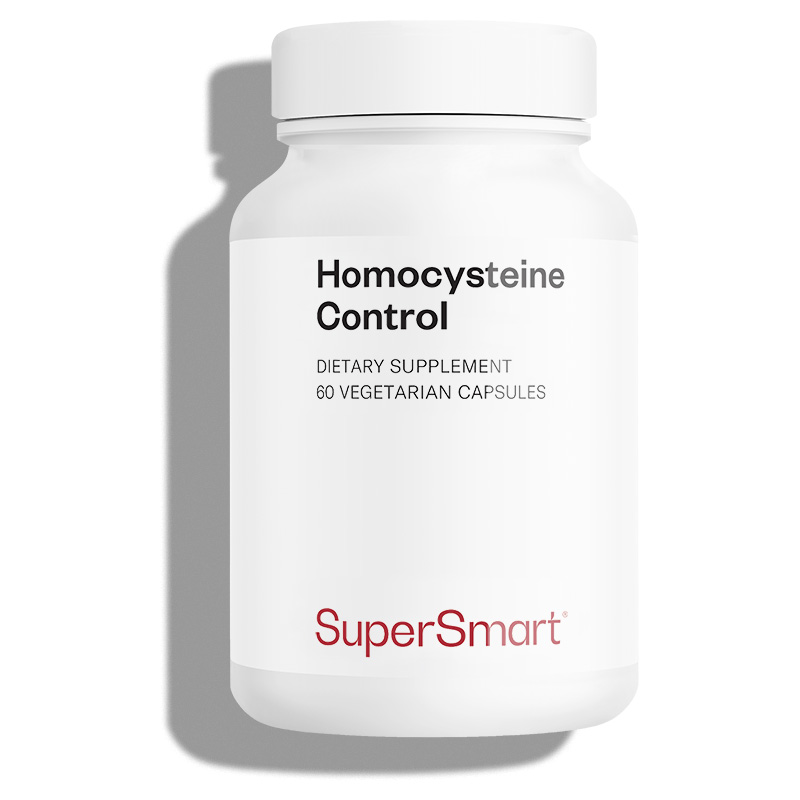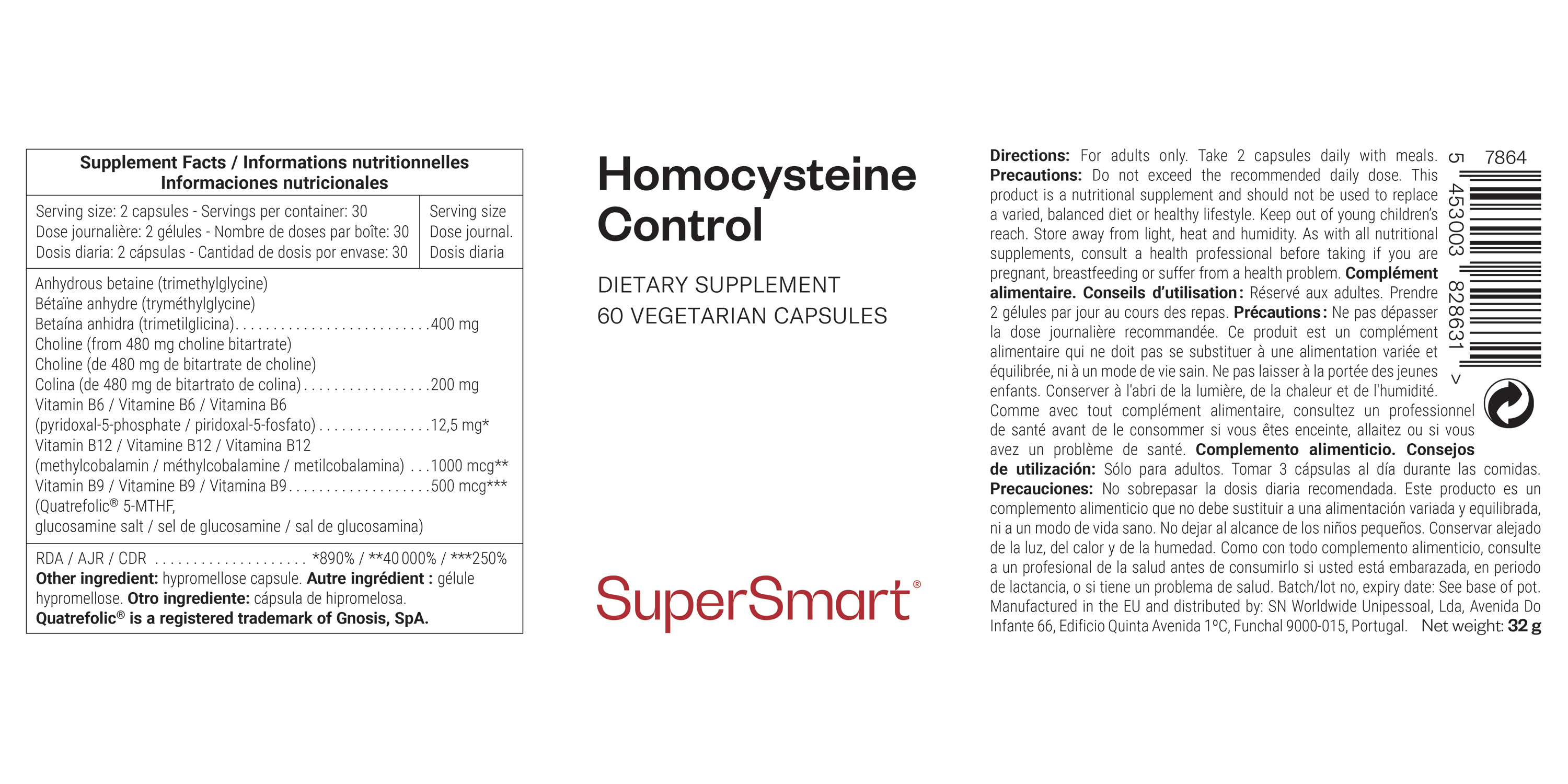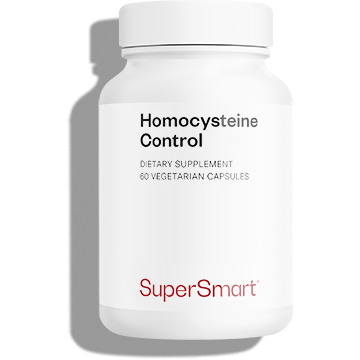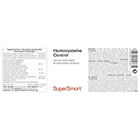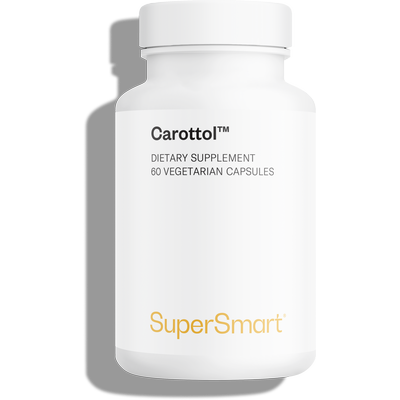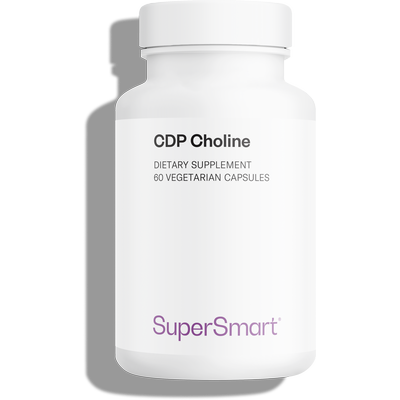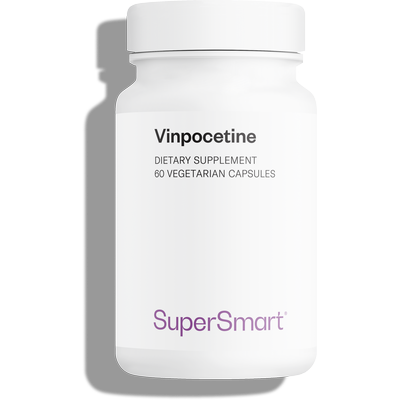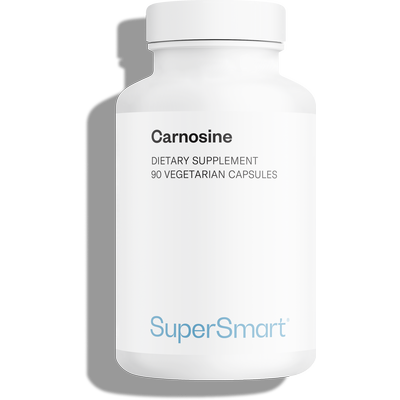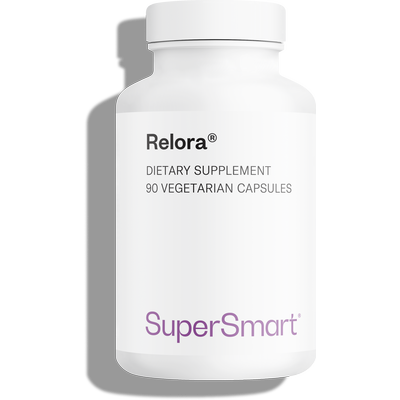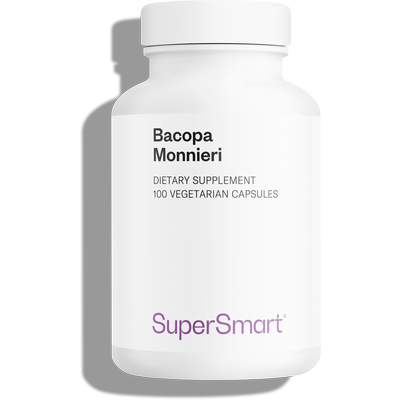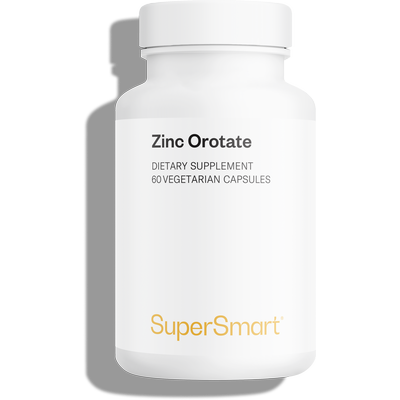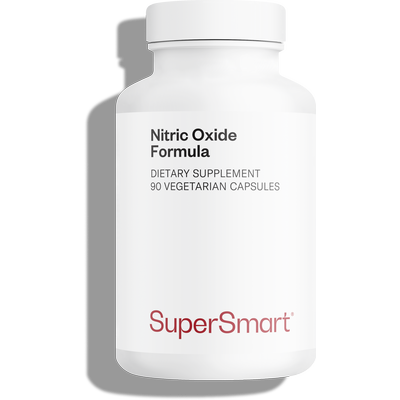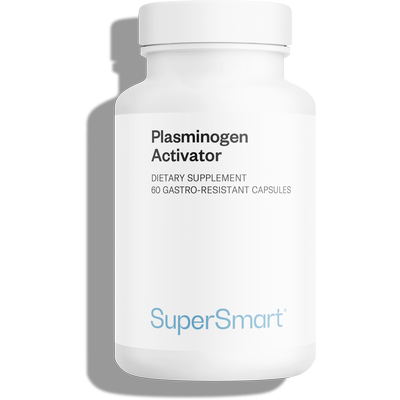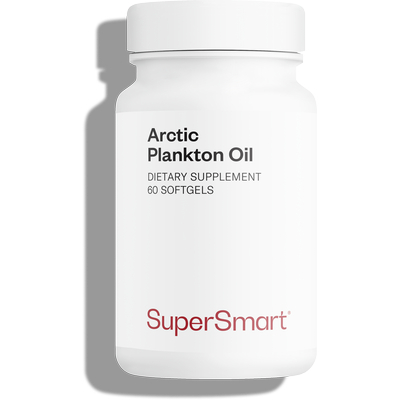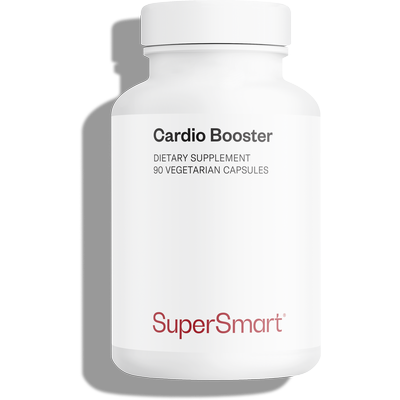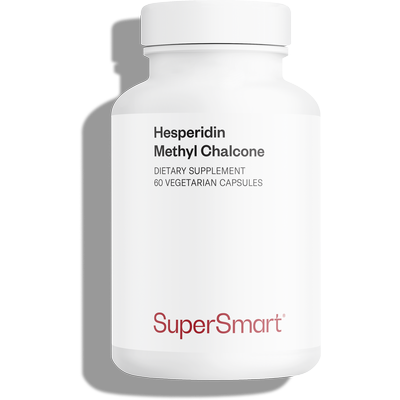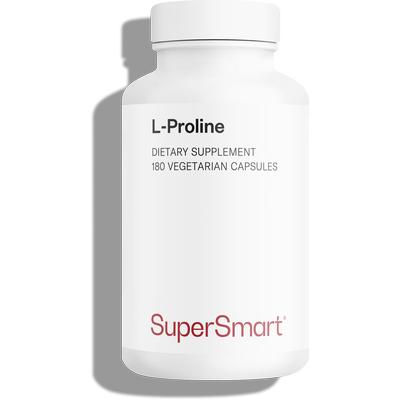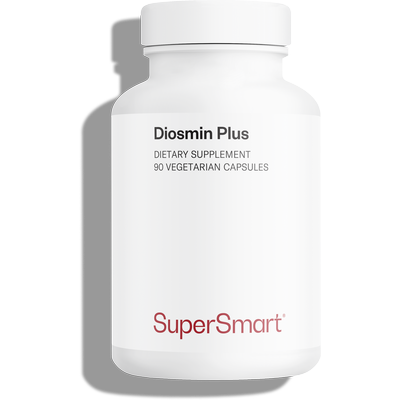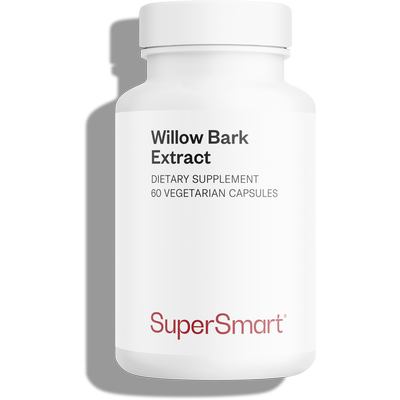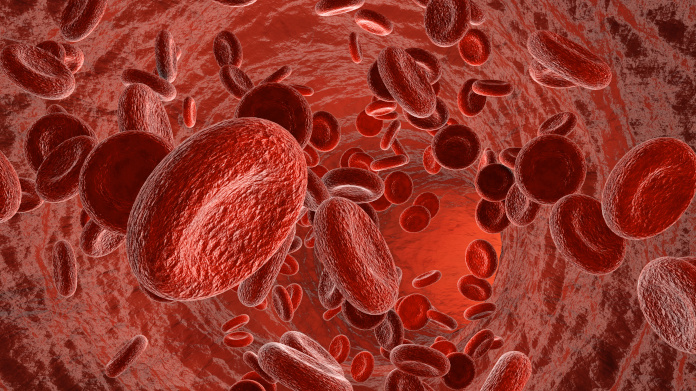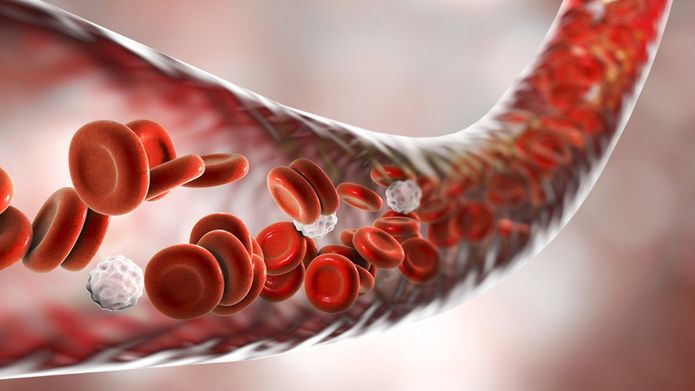Complete your selection
Homocysteine Control is a dietary supplement that combines the 5 most effective nutrients to help regulate and, in particular, reduce homocysteine.
Excessive homocysteine levels can be harmful to cardiovascular and general health.
This product is classified in our category dedicated to heart and blood circulation.
Composition and benefits of this dietary supplement in lowering high homocysteine levels
Role of homocysteine and dangers of hyperhomocysteinemia
Homocysteine is an amino acid naturally present in the body. It is derived from methionine, an essential amino acid supplied by the diet.
Homocysteine is involved in the methylation cycle, a process involved in regulating gene expression and the production of certain molecules: SAM-e, glutathione, etc. (1).
However, under certain conditions (nutritional imbalances, genetic variations, absorption problems linked to ageing, kidney problems, taking certain drugs, lower oestrogen levels, etc.), homocysteine can become too concentrated in the blood (known as hyperhomocysteinemia) and thus will:
- increase oxidative stress;
- maintain inflammation;
- weaken the walls of blood vessels;
- promote blood clots;
- oxidise LDL cholesterol;
- disrupt certain neurological functions;
- and accelerate cell ageing (2-5).
The 5 best nutrients for lowering homocysteine levels
In the light of these factors, the Homocysteine Control food supplement brings together 5 nutrients selected for their exceptional ability to regulate homocysteine levels in the body:
- vitamin B6 (pyridoxal-5-phosphate): In its active form of pyridoxal-5-phosphate, vitamin B6 contributes to the normal metabolism of homocysteine by acting as a cofactor in its conversion to cystathionine, and then to cysteine, via the transsulphuration pathway (6). In addition, vitamin B6 supports the synthesis of cysteine, thereby promoting the conversion of homocysteine;
- vitamin B9 (Quatrefolic® 5-MTHF, glucosamine salt): In its active form of 5-MTHF, vitamin B9, also known as folate, contributes to the normal metabolism of homocysteine by facilitating its remethylation into methionine (7);
- vitamin B12 (methylcobalamin): In its active form of methylcobalamin, vitamin B12 contributes to the normal metabolism of homocysteine by also supporting its remethylation into methionine (8-9);
- anhydrous betaine (trimethylglycine): Betaine contributes to the normal metabolism of homocysteine by giving it a methyl group via the enzyme betaine-homocysteine methyltransferase (BHMT), which enables it to be converted into methionine (10). The anhydrous form is used for its greater stability and guaranteed active betaine content;
- choline (via choline bitartrate): Choline contributes to the normal metabolism of homocysteine by aiding in the synthesis of betaine, which acts as a methyl donor in the remethylation of homocysteine (11). Choline also contributes to normal lipid metabolism, a complementary factor in maintaining cardiovascular health. Choline bitartrate is preferred for its good bioavailability and high stability.
5 key benefits of this natural formula for reducing homocysteine
Our Homocysteine Control food supplement has 5 strong points:
- the best possible combination for controlling homocysteine: This synergistic formula brings together the 5 nutrients most studied for effectively regulating homocysteine;
- optimal dosages: Our ingredients are ideally dosed, in line with the quantities used in studies demonstrating their impact on homocysteine regulation and the proper functioning of methylation;
- only bioactive forms: We have selected active forms that can be used directly by the body, which avoids the conversion stages that are often limited in some people (due to genetic mutations, age-related loss of enzymatic capacity, cofactor deficiencies, etc.), thus guaranteeing maximum and immediate effectiveness;
- the choice of Quatrefolic®, a patented, award-winning ingredient: For vitamin B9, we use Quatrefolic®, a patented form of 5-methyltetrahydrofolate (5-MTHF). This active form of vitamin B9 is recognised for its stability, superior bioavailability and clinically validated efficacy. Quatrefolic® has already won awards for its performance and innovation at Vitafoods;
- packaging in vegetarian capsules: The supplement is presented in the form of hypromellose (HPMC) vegetarian capsules, with no added excipients, for a 100% pure and natural formulation.
What is in Homocysteine Control
Any questions?
The normal value for homocysteine in the blood is usually between 5 and 15 µmol/L.
Higher levels may be associated with an increased risk of cardiovascular disease.
For information, hyperhomocysteinemia is considered moderate between 15 and 30 µmol/L, intermediate between 30 and 100 µmol/L and severe above 100 µmol/L.
Hyperhomocysteinemia can have a number of negative health consequences, including:
- cardiovascular: atherosclerosis, heart attacks, strokes, thrombosis, etc.;
- neurological: cognitive problems, depression, dementia, etc.;
- skeletal: bone fragility, increased risk of fractures, etc.;
- renal: impaired renal function, etc.; and
- other: complications of pregnancy, certain congenital anomalies, etc.
In the event of hyperhomocysteinemia, it is advisable to seek the advice of a health professional, who will be able to identify any underlying causes (kidney disease, hypothyroidism, genetic disorders, medication, etc.), define a suitable treatment and prevent complications.
Excessive homocysteine levels can be treated mainly by:
- supplementation with vitamins B6, B9 (folic acid) and B12, to make up for a potential deficiency (recommended doses may vary depending on the individual's condition);
- eating foods rich in B vitamins: green leafy vegetables, fruit, legumes, liver, eggs, fish, etc.;
- limiting consumption of caffeine, alcohol and red meat; and
- physical activity, to improve the overall metabolic profile.
In addition to this supplement, we recommend taking the omega-3s EPA and DHA, which are very important for cardiovascular health. DHA and EPA contribute to the normal functioning of the heart and the maintenance of normal blood pressure and triglyceride levels. You'll find them particularly in oily fish (salmon, sardines, etc.) and in larger quantities in omega-3 food supplements such as fish oil (like Super Omega 3) or zooplankton oil (like Arctic Plankton Oil).
Metabolic health also depends to a large extent on intestinal health, so be sure to take a probiotic to help balance your gut microbiota (such as Lactobacillus Reuteri).
You should also pay attention to your methylation capacity, a biochemical process that is crucial to many cellular functions. S-adenosylmethionine (commonly abbreviated SAM-e) is an endogenous compound that plays a central role in methylation. The body produces it naturally from methionine (an essential amino acid) and ATP (the primary energy carrier in cells). SAM-e is also available as a dietary supplement (such as SAM-e 400 mg).
Need help?
You may also like

